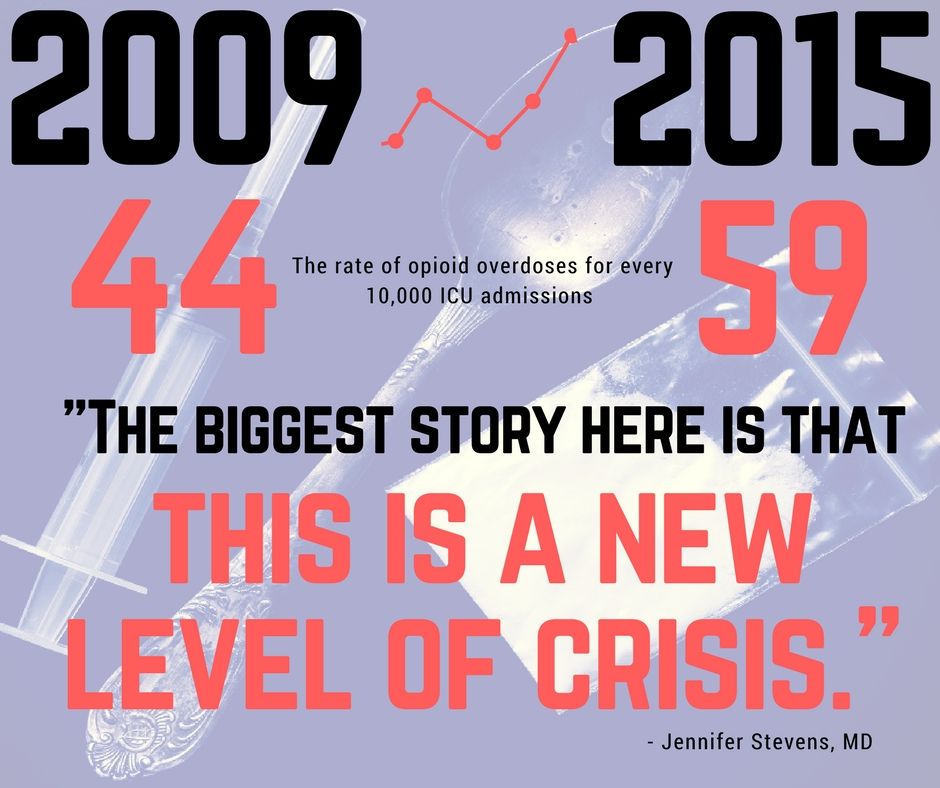ICU Deaths from Opioid Overdose Have Nearly Doubled
“This study tells us that the opioid epidemic has made people sicker and killed more people, in spite of all the care we can provide in the ICU, including mechanical ventilation, acute dialysis, life support and round-the-clock care."

Published the same week as a study detailing the under-reported rate of addiction medicine-related deaths in the US, a new study reports that annual intensive care unit (ICU) deaths linked to opioid overdoses has nearly doubled since 2009.
Researchers — led by study author Jennifer Stevens, MD, associate director of the Beth Israel Deaconess Medical Center ICU and an assistant professor at Harvard Medical School — scoured data from 162 participating hospitals in 44 states. The data tracked opioid-related ICU deaths from January 2009 through September 2015.
In that time, the hospitals reported about 4.15 million patients to undergo ICU care. From that total, 21,705 were patients that overdosed on opioids — heroin being the most common.
The mortality rate of ICU-admitted patients with overdoses was initially reported at 7%, before increasing to 10% in 2015, according to the study.
Per 10,000 admissions during that period, there were 52.4 ICU admissions for every opioid overdose. But from beginning to end, that rate had increased 34%, from 44 per 10,000 to 59 per 10,000.
Stevens said the study was spurred on by a perceived increase among researchers in the amount of young patients being treated in the ICU for opioid issues.
"It is troubling that we were unfortunately correct," Stevens said.
Though the studied data predominately featured hospitals situated in urban areas, and all patients were at least 18 years old, Stevens said this only showed how severe the epidemic has become.
"Again, these are places where ICUs are most resourced," Stevens said. "Even in these environments, you’re seeing substantial mortality."
Stevens said the opioid epidemic has become more deadly in spite of the machinations of an ICU.
"The fact that we found the mortality was going up half a percent per month is pretty troubling," Stevens said. "The biggest story here is that this is a new level of crisis. Our study ends in 2015, but where things are now, I have to think things have gone on at a similar rate."
The researchers additionally estimated that the cost of care for these increased overdose incidences has nearly doubled as well. In the same period, treating one ICU overdose period increased from $58,517, to $92,408 in 2015.
Among the overdose patients, 25% experienced aspiration pneumonia, 15% experienced rhabdomyolosis — or, the release of dead muscle fiber into the bloodstream. Another 8% experienced anoxic brain injury and 6% experienced septic shock.
Although the research is clearly indicative of the difficulties ICUs face in the wake of the opioid epidemic — with this study being the first to document such an issue, according to researchers — there’s still difficulty in pointing to an actual cause.
When officials attempt to address the presented issue, Stevens said they'd do better to look at the epidemic than the state of ICUs.
“These data don’t tell us whether the problem is with the drugs themselves, challenges with pre-hospital care for patients with overdose, our care in the ICUs or some combination of these factors,” Stevens said. “The urgency of our findings, however, suggests the need for a larger, national approach to developing safe strategies to care for patients with overdose in the ICU, to provide coordinated resources in the hospital for patients and families and to help survivors maintain sobriety on discharge.”
The study, “The Critical Care Crisis of Opioid Overdoses in the United States,” was published online in advance of print in the Annals of the American Thoracic Society early Friday morning.
Related Coverage
Opioid Threat Grows to National Emergency, Study Shows Mortality Rates Are Even Worse
Opioid Use Disorder Injection Drug Gets FDA Priority
What Is The Most Cost-Effective HCV Drug Regimen?